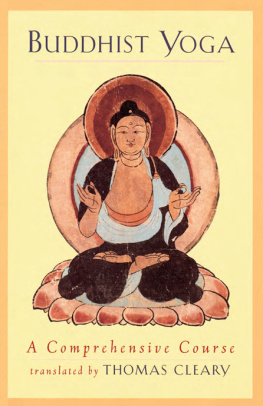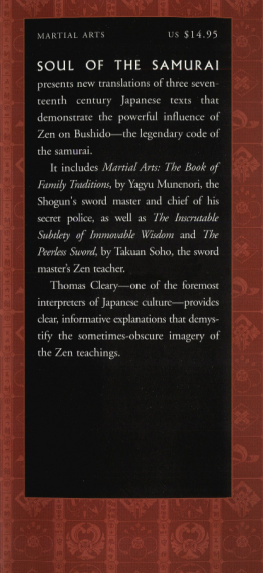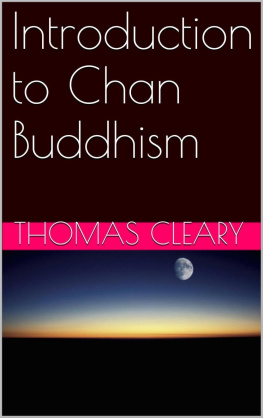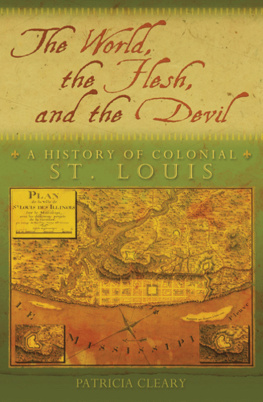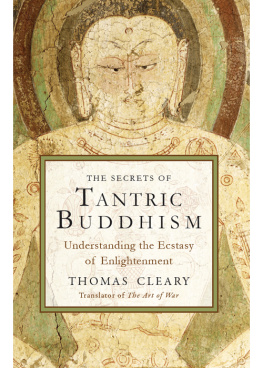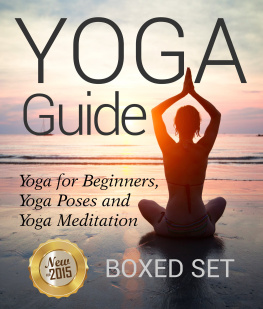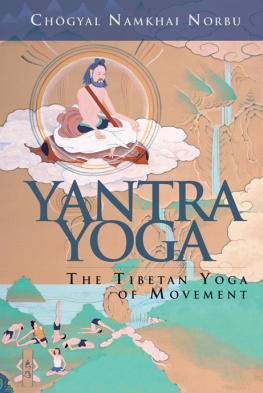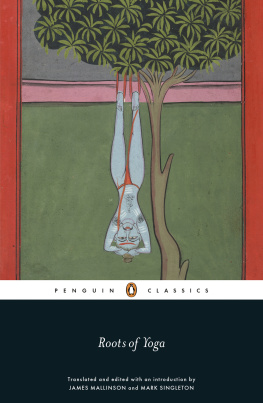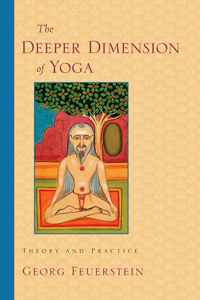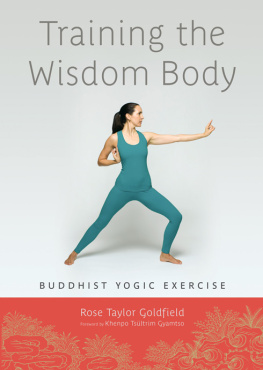ABOUT THE BOOK
The word yoga has many meanings, including meditation, method, and union. While the physical exercises of Hindu yoga are familiar to Westerners, the subtle metaphysics and refined methods of spiritual development that characterize Buddhist yoga are not yet well known. This volume presents a landmark translation of a classical sourcebook of Buddhist yoga, the Sandhinirmochana-sutra, or Scripture Unlocking the Mysteries, a revered text of the school of Buddhism known as Vijnanavada or Yogachara. The study of this scripture is essential preparation for anyone undertaking meditation exercise. Linking theory and praxis, the scripture offers a remarkably detailed and thorough course of study in both the philosophical and pragmatic foundation of Buddhist yoga, and their perfect, harmonious union in the realization of Buddhist enlightenment.
THOMAS CLEARY holds a PhD in East Asian Languages and Civilizations from Harvard University and a JD from the University of California, Berkeley, Boalt Hall School of Law. He is the translator of over fifty volumes of Buddhist, Taoist, Confucian, and Islamic texts from Sanskrit, Chinese, Japanese, Pali, and Arabic.
Sign up to receive news and special offers from Shambhala Publications.

Or visit us online to sign up at shambhala.com/eshambhala.
BUDDHIST YOGA

A Comprehensive Course
Translated by THOMAS CLEARY

SHAMBHALA
Boston & London
2014
Shambhala Publications, Inc.
Horticultural Hall
300 Massachusetts Avenue
Boston, Massachusetts 02115
www.shambhala.com
1995 by Thomas Cleary
Cover art: Buddha, Tang dynasty (9th century). Copyright British Museum.
All rights reserved. No part of this book may be reproduced in any form or by any means, electronic or mechanical, including photocopying, recording, or by any information storage and retrieval system, without permission in writing from the publisher.
Library of Congress Cataloging-in-Publication Data
Tripiaka. Strapiaka. Sadhinirmocanastra. English. Buddhist yoga: a comprehensive course/translated by Thomas Cleary.1st ed.
p. cm.
eISBN 978-0-8348-2923-7 ISBN 978-1-57062-018-8
I. Cleary, Thomas.
BQ2092.E5C54 1995 94-46663
294.385dc20 CIP
CONTENTS


The word yoga has many meanings, including the ideas of union, method, effort, and meditation. The elaborate psychophysical exercise routines of Hindu Yoga are familiar to Westerners, but the subtle metaphysics and refined methods of spiritual development characteristic of Buddhist Yoga are not well known.
This volume presents a translation of the Sandhinirmochana-sutra, Scripture Unlocking the Mysteries, a complete classical sourcebook of Buddhist Yoga. This is one of the main texts of that stream of Buddhist tradition known as Vijnanavada, The Doctrine of Consciousness, or Yogachara, The Practice of Yoga.
This sutra, or scripture, provides a remarkably detailed course in the philosophical and pragmatic bases of Buddhist Yoga. This is a text that is meant to be read and reread many times as essential preparation by those who are thinking of undertaking meditation exercises of any sort. This procedure was the classical way, and many of the shortcomings and aberrations of modern Western meditation cults can be traced to abandonment of this tradition.
The Sandhinirmochana-sutra is divided into eight sections, including an introduction in the classical style. As in the case of all universalist Buddhist scriptures, the introduction to this text is an important part of the work, making preliminary presentations of key principles and practices in a highly concentrated setting, partly symbolic and partly literal.
The second section of the sutra, entitled Characteristics of Ultimate Truth, opens with a discussion of the nonduality of all things. This is taken to mean that phenomena are in essence neither created nor uncreated, neither mundane nor supernal. Concluding that the real nature of things is beyond words, the discussion goes on to depict ultimate truth as inaccessible to thought and deliberation, beyond all objects, beyond all forms, beyond all representation, beyond all controversy. For the purposes of Buddhist Yoga, therefore, it is essential to understand that ultimate reality is not a philosophical construct.
The sutra then goes on to discuss the relationship between ultimate truth and practices. Through an extensive course of reason based on the logic of metaphysics and corresponding spiritual experience, the point is established that ultimate truth and practices are neither one and the same nor completely different. This is an essential insight, one that distinguishes the special nature of Buddhist Yoga; it is based on one of the most important reforms initiated by Gautama Buddha in the spiritual practices of ancient yoga.
This discussion is followed by descriptions of intellectual and spiritual conceit consequent upon failure to perceive the ultimate truth pervading all things. The entire section is then closed with the logical conclusion that all-pervasive ultimate truth is everywhere one and has no differentiation in itself in spite of pervading all differentiations. To see the integrity of ultimate truth underlying the fragmented facade of ordinary experience is one of the purposes of Buddhist Yoga.
The third section of the sutras course outlines working descriptions of mind, intellect, and consciousness. Here are found the classical Buddhist psychological constructs of eight and nine consciousnesses, which are used as a basis of orientation in yoga. This brief section of the sutra concludes with a transcendental description of mastery of these mysteries as a state of consciousness in which, by virtue of focus on ultimate truth, there is no inner discrimination of, or identification with, phenomena corresponding to constructed definitions.
The fourth section of the sutra deals with the general characteristics of all phenomena; their conceptualized, dependent, and perfectly real characteristics. The conceptualized characteristic of things refers to phenomena as we conceive of them and speak of them. The dependent characteristic of things refers to interdependent origination of phenomena, which thus exist only as part of universal relativity and not as individually self-subsistent entities. The perfectly real characteristic of things refers to thusness, the direct experience of phenomena without the superimposition of conceptual descriptions.
Pragmatic understanding of the distinctions among these three characteristics is essential to correct practice of Buddhist Yoga and correct realization of emptiness, without which there is no possibility of spiritual liberation. This section on the characteristics of all phenomena is thus followed up in the next section by a discussion of essencelessness, the Buddhist principle of emptiness.
Here, essencelessness is defined in three ways. First is essencelessness of characteristics, which refers to the nature of conceptualized characteristics projected on phenomena. Second is essencelessness of birth, which refers to the dependent or relative character of phenomena, which by virtue of their interdependence have no individual point of origin. Third is ultimate essencelessness, referring to the selflessness of all things, which is called the ultimate truth.
Next page
